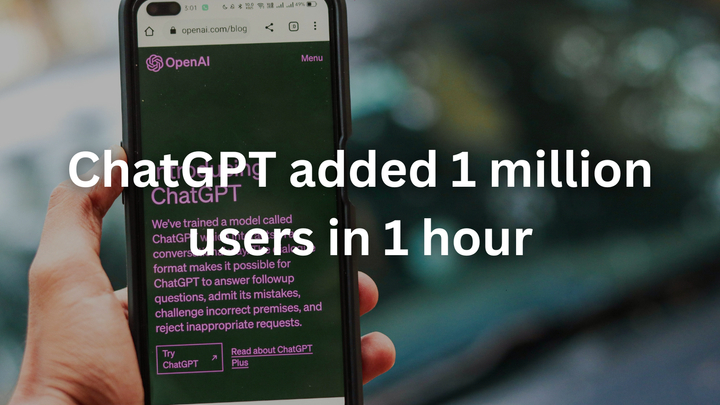42% Say AI Is Tearing Companies Apart—Here’s Why

Generative AI was supposed to revolutionize business, but for many companies, it’s causing more problems than solutions. A new 2025 AI Survey from Writer and Workplace Intelligence reveals that 42% of executives say AI adoption is tearing their company apart.
The issues? Power struggles, unrealistic expectations, poor ROI, and employee resistance. While AI has massive potential, companies are struggling to implement it the right way.
Here’s why AI is creating chaos—and how businesses can fix it before it’s too late.
Why AI Is Tearing Companies Apart
Despite heavy investment in AI, many companies are facing unexpected friction between leadership, IT teams, and employees.
🔹 Business Leaders vs. Reality
📌 Many executives assume AI can solve problems instantly—but in reality, AI still needs significant human effort to fine-tune and guide its outputs.
📌 Employees often feel frustrated when leaders expect AI to be a "click of a button" solution while they deal with the real complexities.
💬 My Take:
I can truly feel how AI is causing division in companies. Business leaders often underestimate the effort required to make AI useful. AI isn’t magic—it needs constant tuning, guidelines, and human oversight. When executives push unrealistic AI expectations, it angers employees who are left handling the messy reality.
🔹 IT vs. Business Leaders: A Growing Divide
📌 71% of C-suite executives admit that AI applications are being developed in silos—without proper coordination between teams.
📌 Two-thirds of executives report tension between IT teams and other business leaders.
💬 My Take:
AI should be a collaborative effort, but instead, teams are building AI tools in isolation. IT teams focus on technical feasibility, while business leaders expect instant results. This misalignment leads to frustration, delays, and ineffective AI solutions.
🔹 Employees Resisting AI—For Good Reason?
📌 31% of employees are pushing back against AI adoption.
📌 41% of Gen Z workers are actively rejecting AI-generated outputs.
💬 My Take:
I totally understand why Gen Z workers reject AI outputs. AI can sometimes produce low-quality, unusable content, making work even harder instead of easier. If AI doesn’t deliver real value, people won’t use it—and they shouldn’t be forced to.
🔹 Expensive AI, But Weak ROI
📌 73% of companies spend at least $1 million a year on AI.
📌 Yet, only one-third have seen significant returns.
📌 35% of employees are paying out-of-pocket for AI tools because their employers don’t provide the ones they need.
💬 My Take:
Instead of forcing employees to use company-approved AI tools, businesses should subsidize AI usage. Give employees a monthly stipend to choose the AI tools that work best for their needs. AI isn’t one-size-fits-all, and letting employees decide how to use it could drive better adoption and ROI.

How Companies Can Fix AI Adoption
While AI adoption is messy, companies can turn things around by taking a more strategic, people-focused approach.
✅ Set Realistic Expectations
🔹 AI isn’t an instant fix—executives must understand that human effort is still required to guide and improve AI models.
🔹 Leaders should work closely with employees to set achievable AI goals.
✅ Break Down Silos
🔹 IT and business teams must collaborate instead of working separately.
🔹 Companies should create cross-functional AI teams to align AI development with business needs.
✅ Give Employees AI Flexibility
🔹 Instead of forcing AI tools on employees, companies should offer AI stipends so workers can choose the tools that fit their workflow.
🔹 This encourages AI adoption while ensuring employees actually benefit from AI.
✅ Choose AI Vendors Carefully
🔹 94% of executives aren’t fully satisfied with their AI vendors—meaning companies need to select vendors that offer real support.
🔹 The right AI vendor should help shape an AI strategy, not just sell a product.
Final Thoughts: AI Should Unite, Not Divide
AI has enormous potential, but poor implementation is tearing companies apart. The solution? More realistic expectations, better collaboration, and smarter AI adoption strategies.
🚀 The Path Forward:
✅ Business leaders must understand AI’s limitations—it’s not magic.
✅ Companies should invest in AI wisely—not just chase trends.
✅ Employees need flexibility—AI stipends could be a game-changer.
✅ AI adoption should be a team effort—not a power struggle.
Companies that get AI adoption right will lead the future. Those that fail to adapt risk internal chaos and wasted investments.
What Do You Think?
💡 Is AI adoption causing problems in your workplace?
💡 How can companies fix AI resistance among employees?
💡 Should businesses give employees AI stipends instead of forcing tools on them?
Let’s discuss on X(Former Twitter)
References:
Staff. (2025, March 19). Writer survey: 42% of c-suite say gen ai is tearing their companies apart. insideAI News. https://insideainews.com/2025/03/19/writer-survey-42-of-c-suite-say-gen-ai-is-tearing-their-companies-apart/



